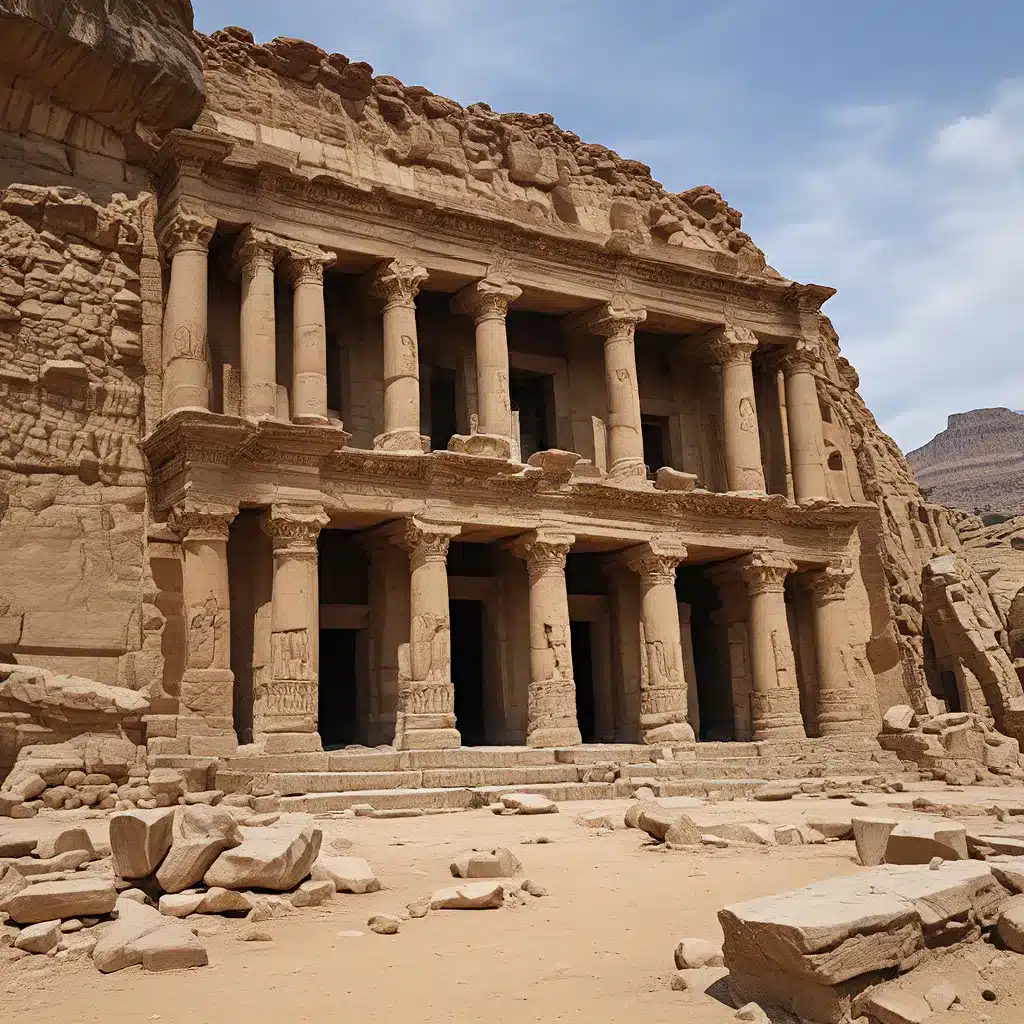
Across the globe, the remnants of ancient civilizations stand as testaments to the ingenuity, resilience, and cultural achievements of our ancestors. From the towering pyramids of Egypt to the enigmatic Moai statues of Easter Island, these monumental structures have captured the imagination of historians, archaeologists, and the general public alike. In this article, we’ll delve into the fascinating world of ancient architecture, exploring the technological marvels, symbolic significance, and enduring mysteries that surround these architectural wonders.
The Enduring Grandeur of Ancient Greece
The ancient Greek civilization is renowned for its exceptional contributions to art, philosophy, and, of course, architecture. The Acropolis of Athens, with its iconic Parthenon, stands as a prime example of the Greek architectural prowess. This magnificent temple, dedicated to the goddess Athena, exemplifies the Classical Greek style with its harmonious proportions, intricate sculptural decorations, and iconic Doric columns.
Beyond the Acropolis, the ancient Greeks left behind a rich architectural legacy. The Theatre of Epidaurus, with its remarkable acoustics and breathtaking setting, is a prime example of the Greek’s mastery of theatrical design. The ruins of ancient Corinth, once a thriving commercial hub, offer a glimpse into the urban planning and civic structures of the Greek world. The National Archaeological Museum in Athens houses an impressive collection of artifacts, including the Antikythera mechanism, a sophisticated astronomical calculator from the 2nd century BC.
The Enigmatic Monuments of Ancient Egypt
No discussion of ancient architecture would be complete without mentioning the iconic monuments of Egypt. The pyramids of Giza, constructed as grand tombs for the pharaohs, are among the most recognizable structures in the world. The Great Pyramid of Khufu, the largest and oldest of the three, is a true engineering marvel, with its precise alignment to the cardinal directions and the sheer scale of its construction.
Beyond the pyramids, the ancient Egyptians left behind a wealth of other monumental structures. The Temple of Karnak, a vast complex of temples, obelisks, and colossal statues, stands as a testament to the Egyptians’ religious and cultural beliefs. The Colossi of Memnon, two massive statues of Pharaoh Amenhotep III, have captivated visitors for centuries with their enigmatic presence.
Recent archaeological discoveries continue to shed light on the technological prowess and cultural significance of ancient Egyptian architecture. The Tomb of Tutankhamun, discovered by Howard Carter in 1922, provided a remarkable window into the funerary practices and artistic achievements of the ancient Egyptians.
Mysterious Structures of the Ancient World
Beyond the well-known ancient civilizations, there are numerous sites around the world that continue to mystify archaeologists and historians. Göbekli Tepe, located in modern-day Turkey, is one such site. This monumental complex, dated to the 10th millennium BC, is considered the oldest known temple in the world, predating the development of agriculture.
Another enigmatic structure is the Moai statues of Easter Island. These massive stone heads, created by the Rapa Nui people, have long been a source of fascination and speculation. The sheer scale and precision of the Moai, as well as the island’s remote location, have led to various theories about their purpose and the methods used to transport and erect them.
Emerging Theories and Ongoing Discoveries
The study of ancient architecture is an ever-evolving field, with new discoveries and theories constantly emerging. In recent years, advancements in remote sensing technology, such as LiDAR (Light Detection and Ranging), have allowed archaeologists to uncover previously unknown structures and settlements, shedding light on the scale and complexity of ancient civilizations.
For example, the recent discovery of the lost city of Mahendraparvata in the Cambodian jungle, using LiDAR technology, has challenged our understanding of the Khmer Empire and its urban planning. Similarly, the use of ground-penetrating radar has helped uncover the underground city of Derinkuyu in Turkey, a vast subterranean network of dwellings, churches, and other structures.
These technological advancements, coupled with ongoing archaeological excavations and interdisciplinary research, continue to expand our knowledge of ancient architecture and the cultures that created them. As we unearth more of these monumental structures, we gain a deeper appreciation for the ingenuity, resilience, and cultural significance of our ancestors.
Preserving the Past for the Future
As we continue to explore and investigate the architectural wonders of the ancient world, the importance of preservation and conservation cannot be overstated. Many of these sites face threats from natural disasters, human-induced damage, and the relentless march of time. Efforts to protect and maintain these cultural treasures are crucial, not only for preserving our shared history but also for inspiring future generations to appreciate the grandeur and significance of ancient civilizations.
Organizations like the The Lost Kingdoms Foundation play a vital role in advocating for the preservation of these sites, raising awareness, and supporting research and conservation efforts. By working together, we can ensure that these monumental structures continue to stand as reminders of our collective past and inspire wonder and understanding for centuries to come.


